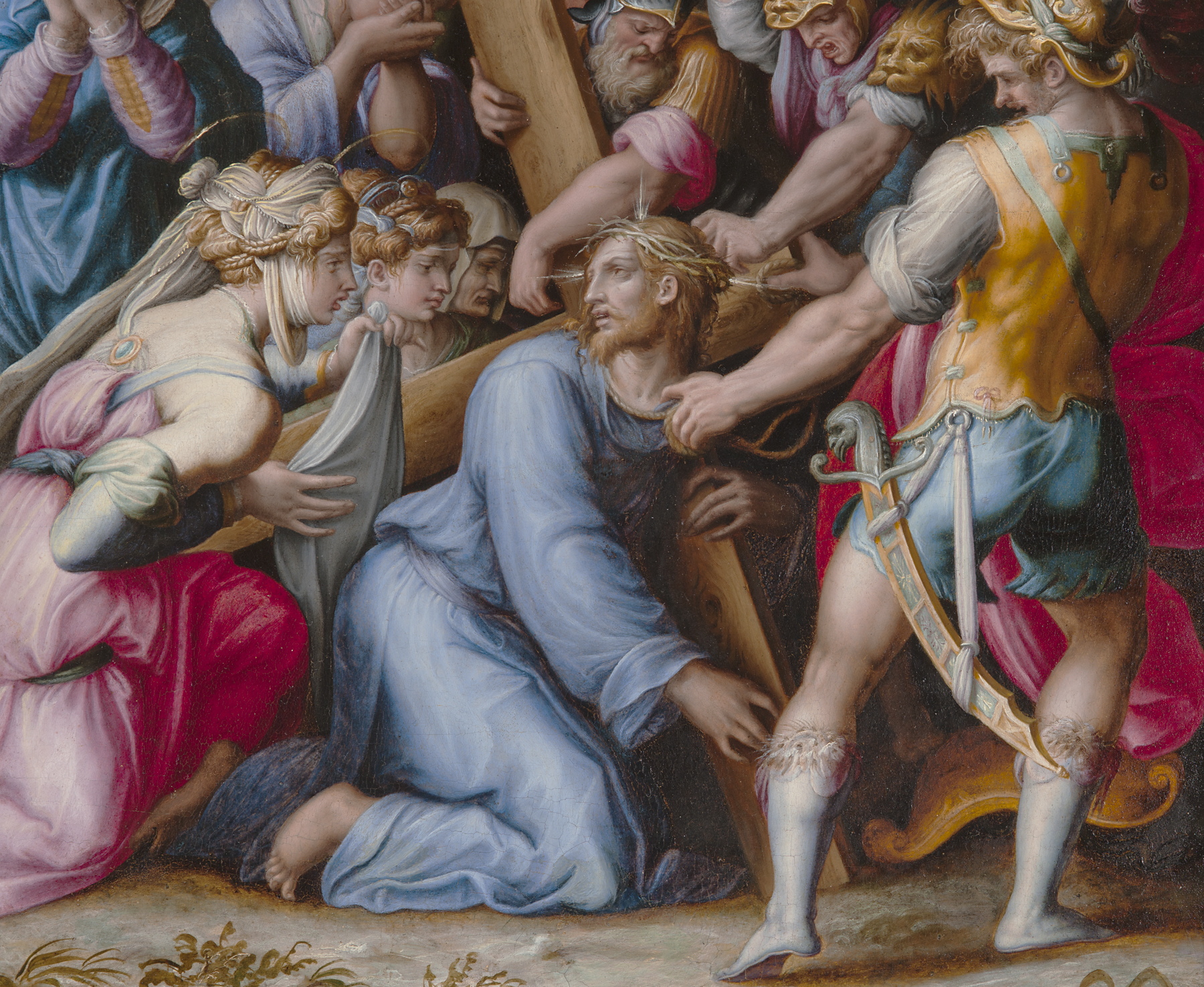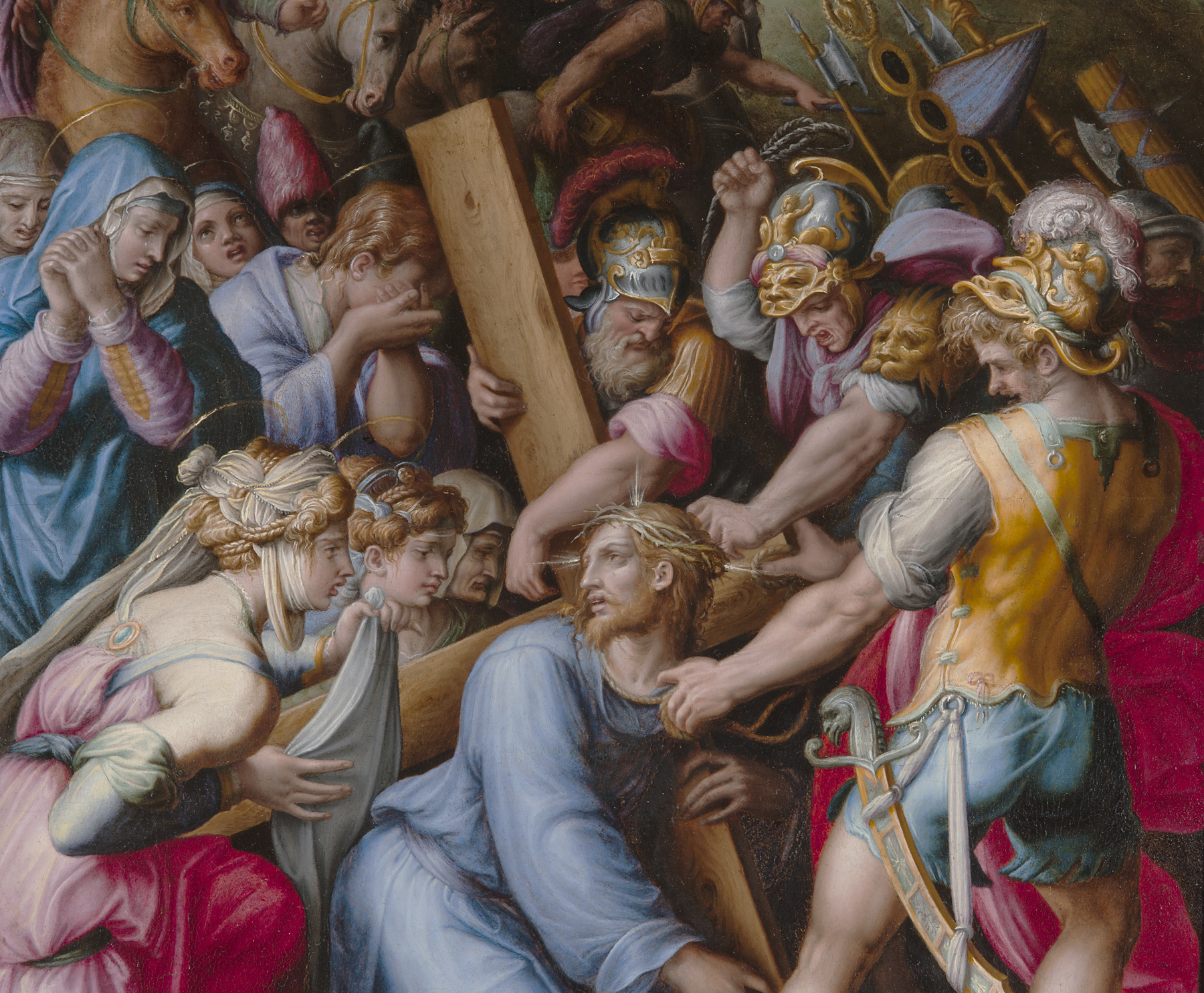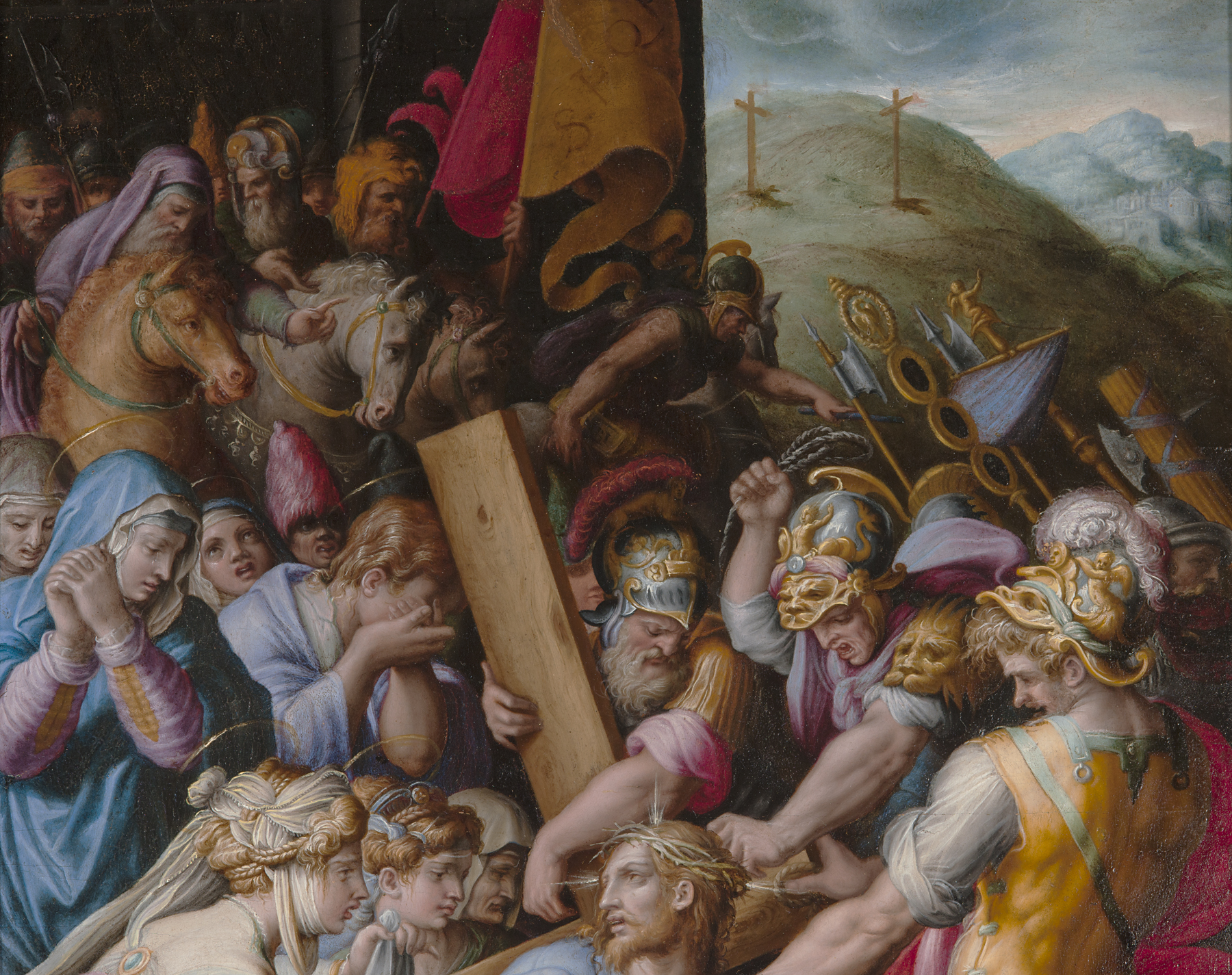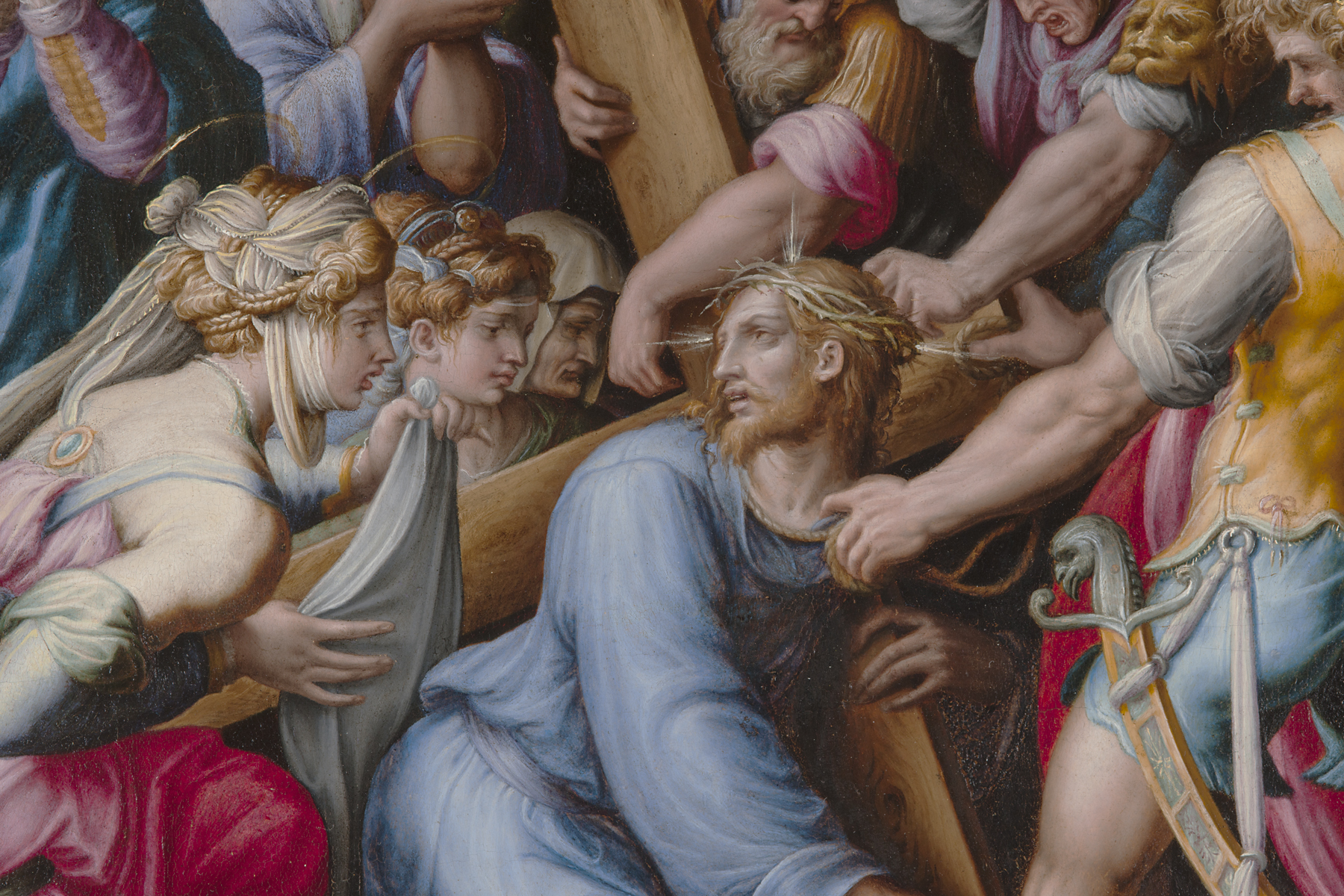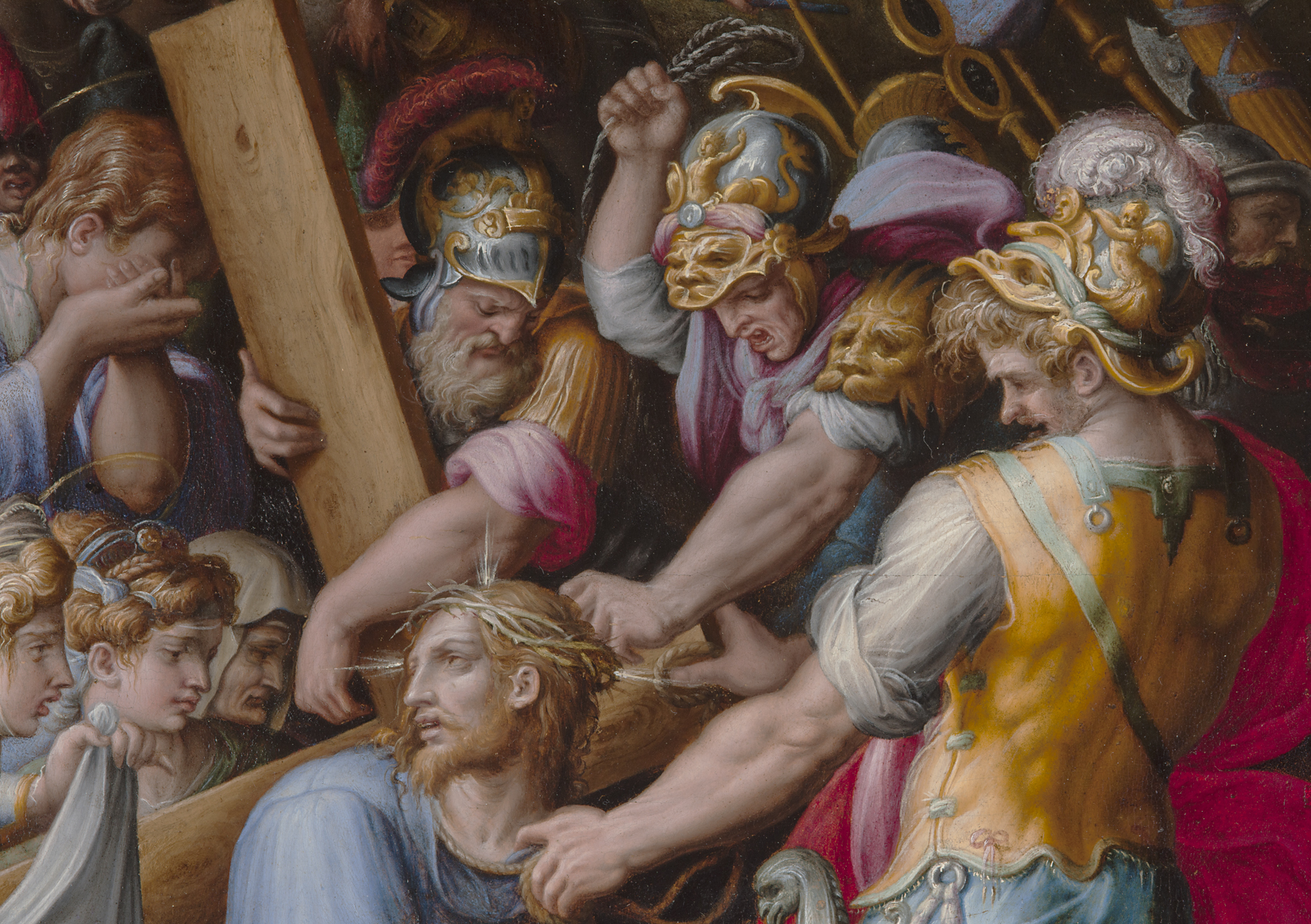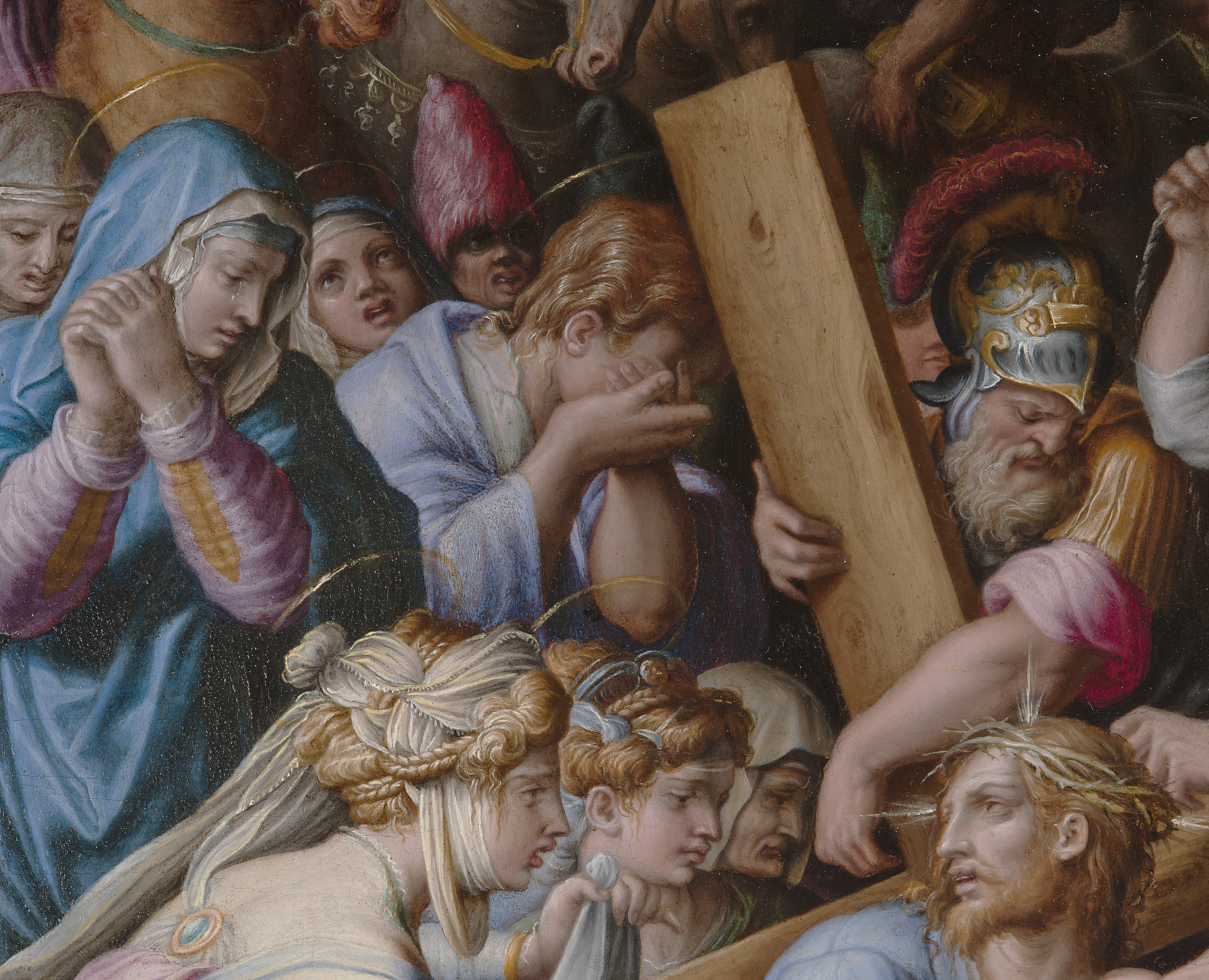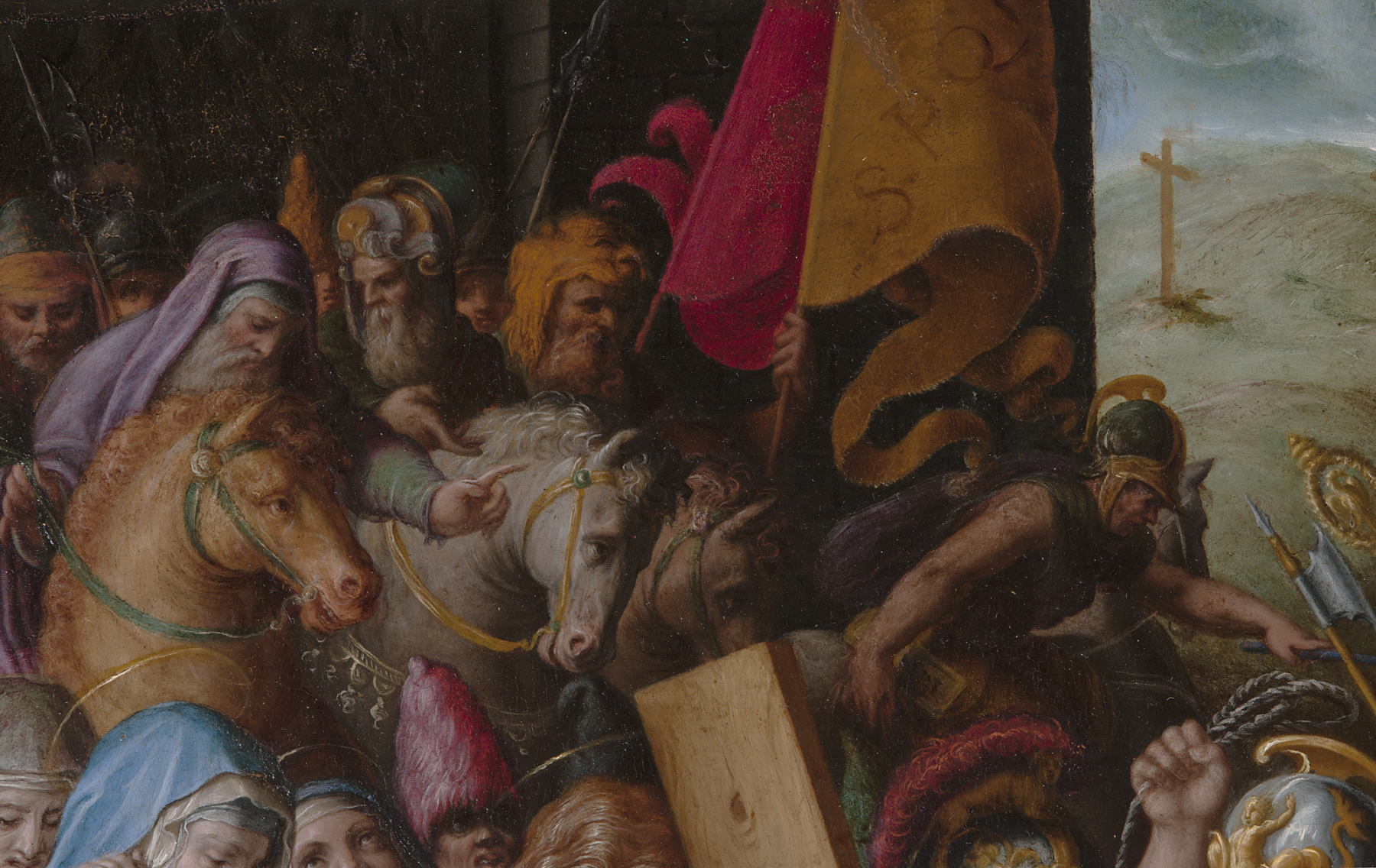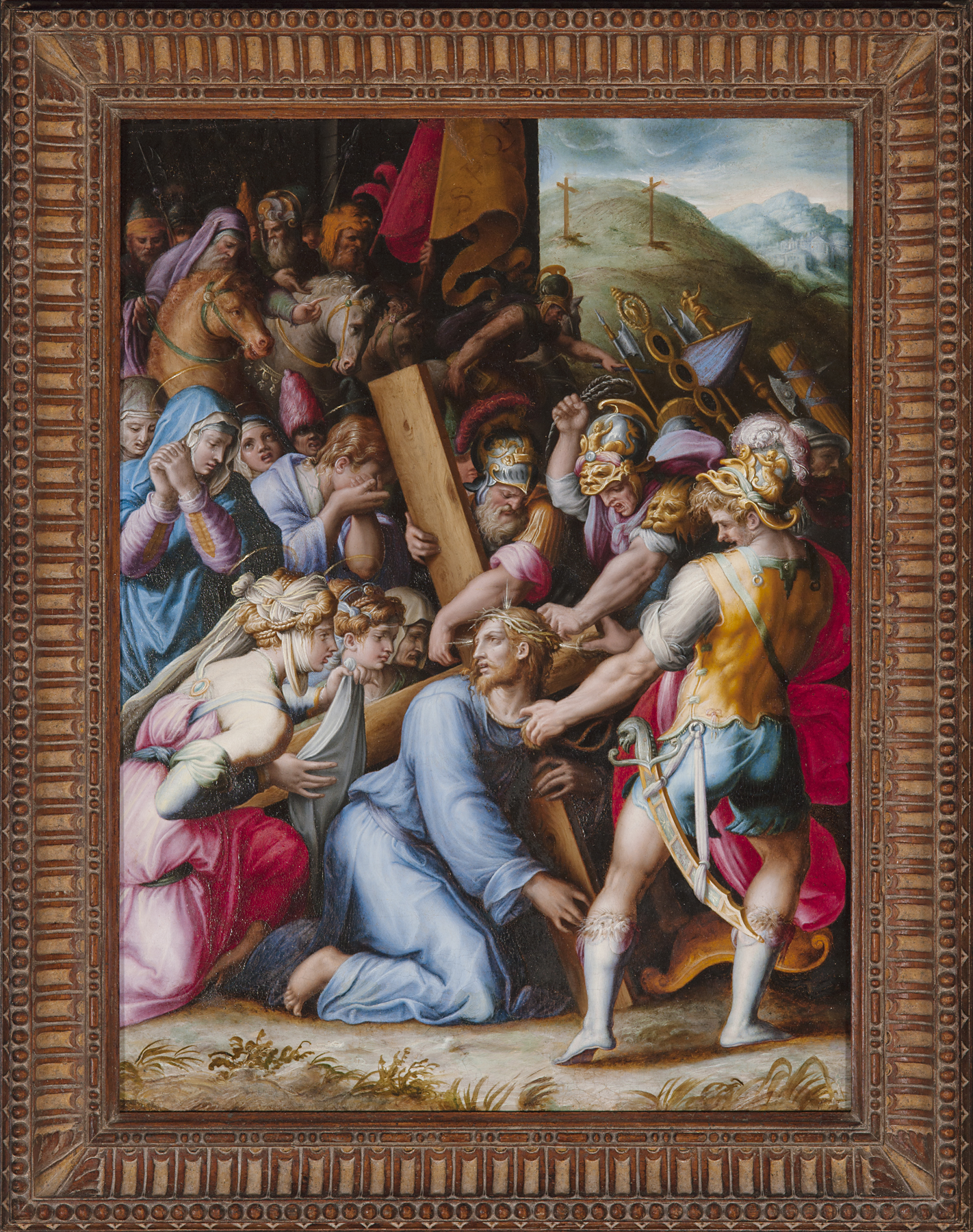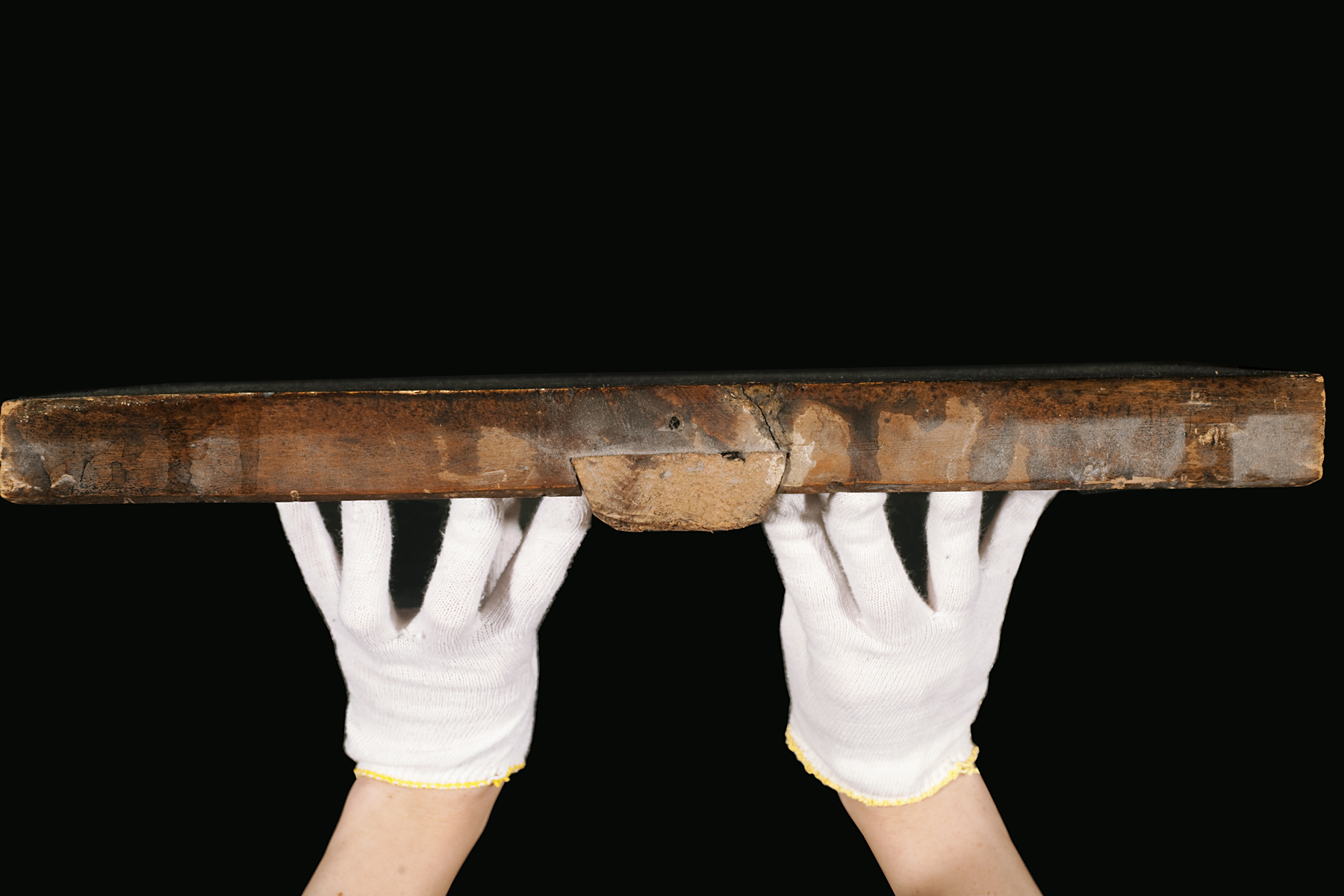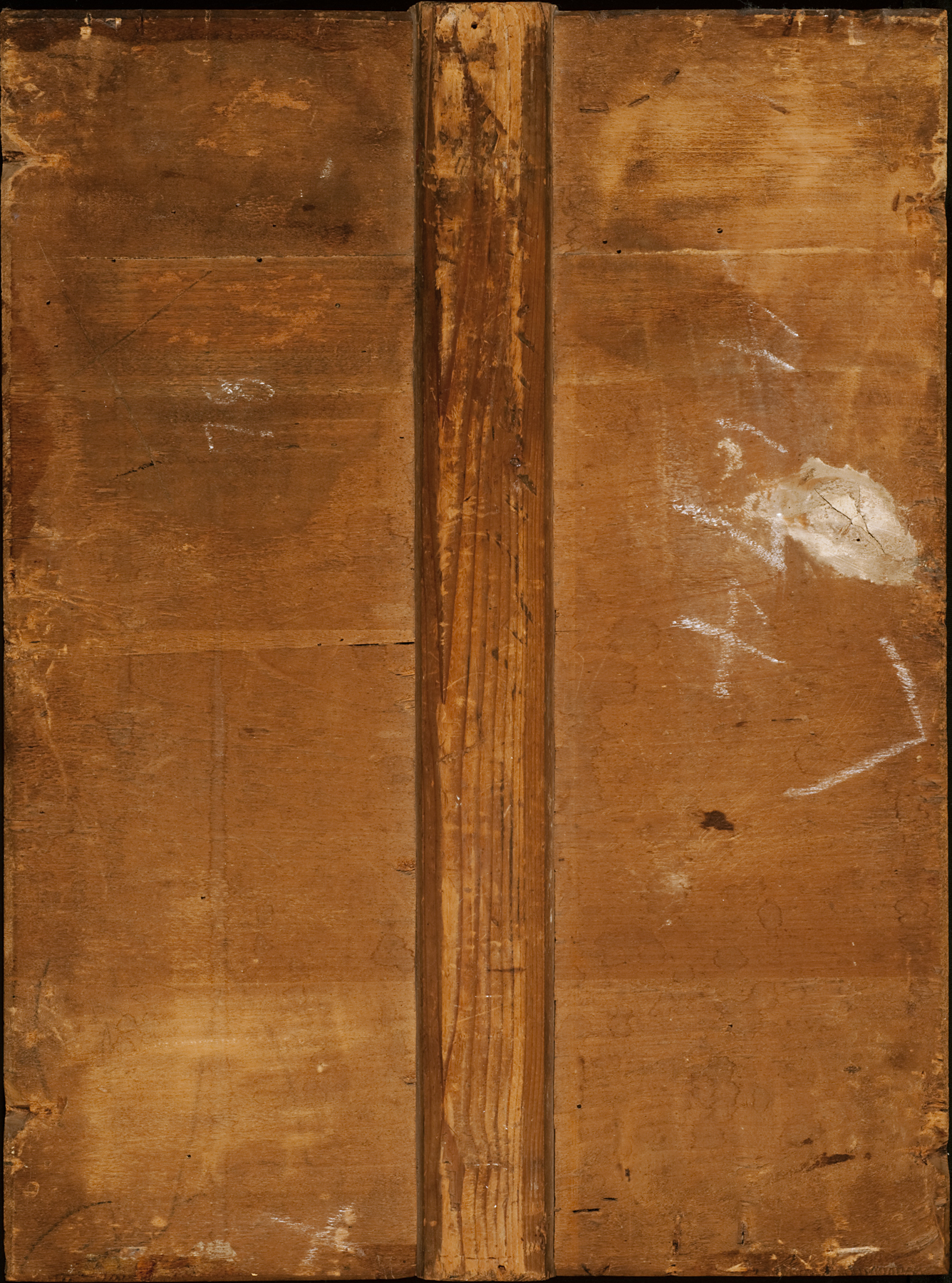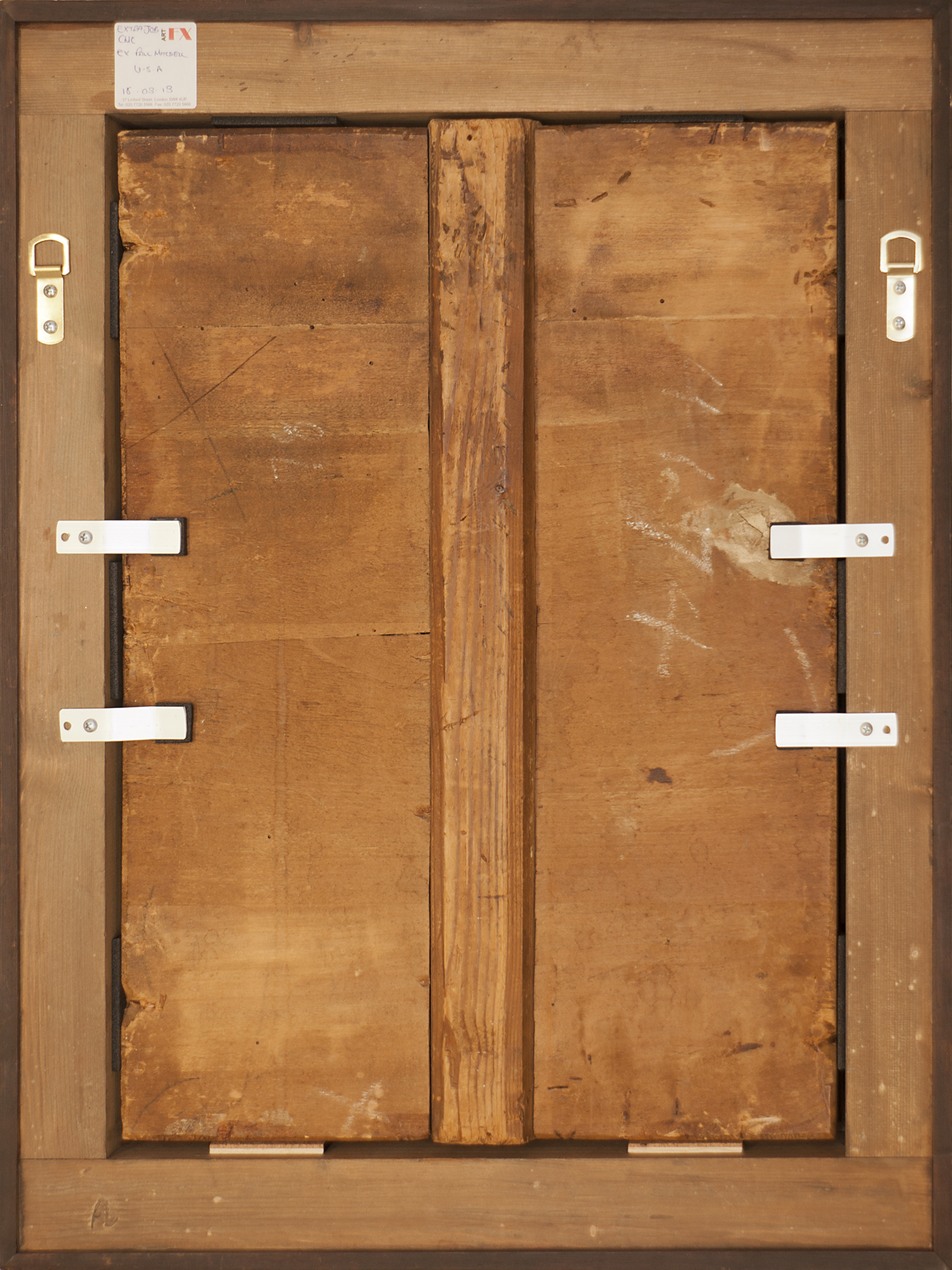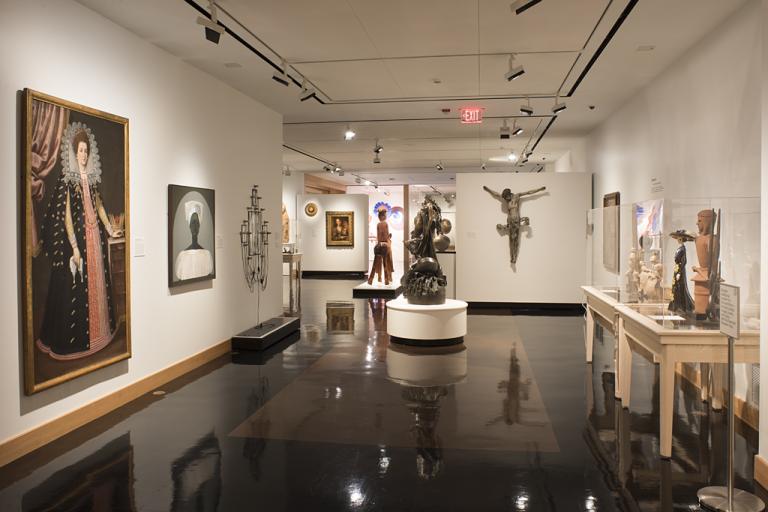Christ Carrying the Cross, Giorgio Vasari
Artwork Overview
Giorgio Vasari, artist
1511–1574
Christ Carrying the Cross,
circa 1562–1565
Where object was made: Italy
Material/technique: oil; panel
Dimensions:
Canvas/Support (Height x Width x Depth): 59 x 44.2 x 3.81 cm
Canvas/Support (Height x Width x Depth): 23 3/16 x 17 3/8 x 1 1/2 in
Frame Dimensions (Height x Width x Depth): 29 1/2 x 23 3/4 x 3 3/4 in
Canvas/Support (Height x Width x Depth): 59 x 44.2 x 3.81 cm
Canvas/Support (Height x Width x Depth): 23 3/16 x 17 3/8 x 1 1/2 in
Frame Dimensions (Height x Width x Depth): 29 1/2 x 23 3/4 x 3 3/4 in
Credit line: Museum purchase
Accession number: 1953.0015
Not on display
If you wish to reproduce this image, please submit an image request

